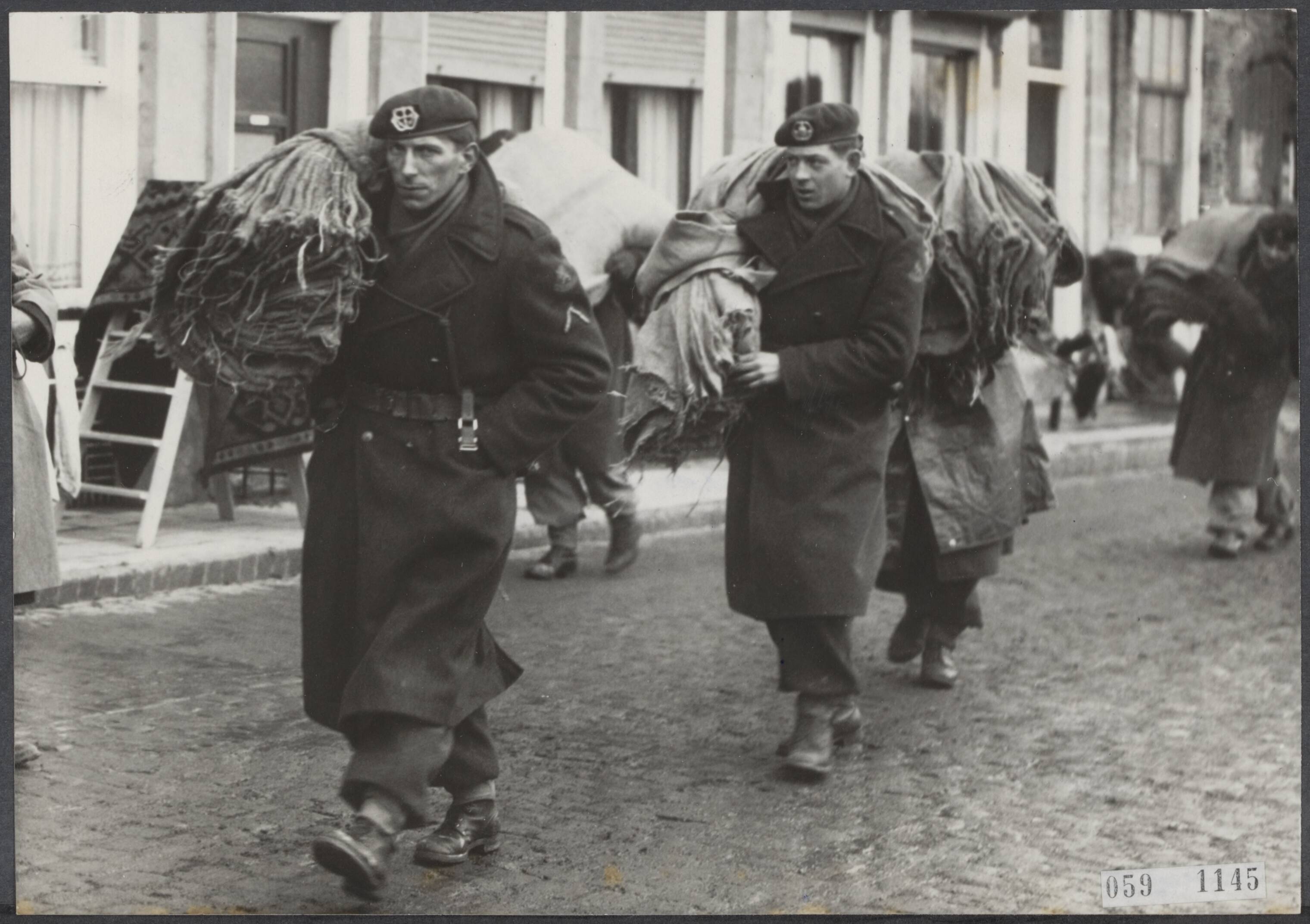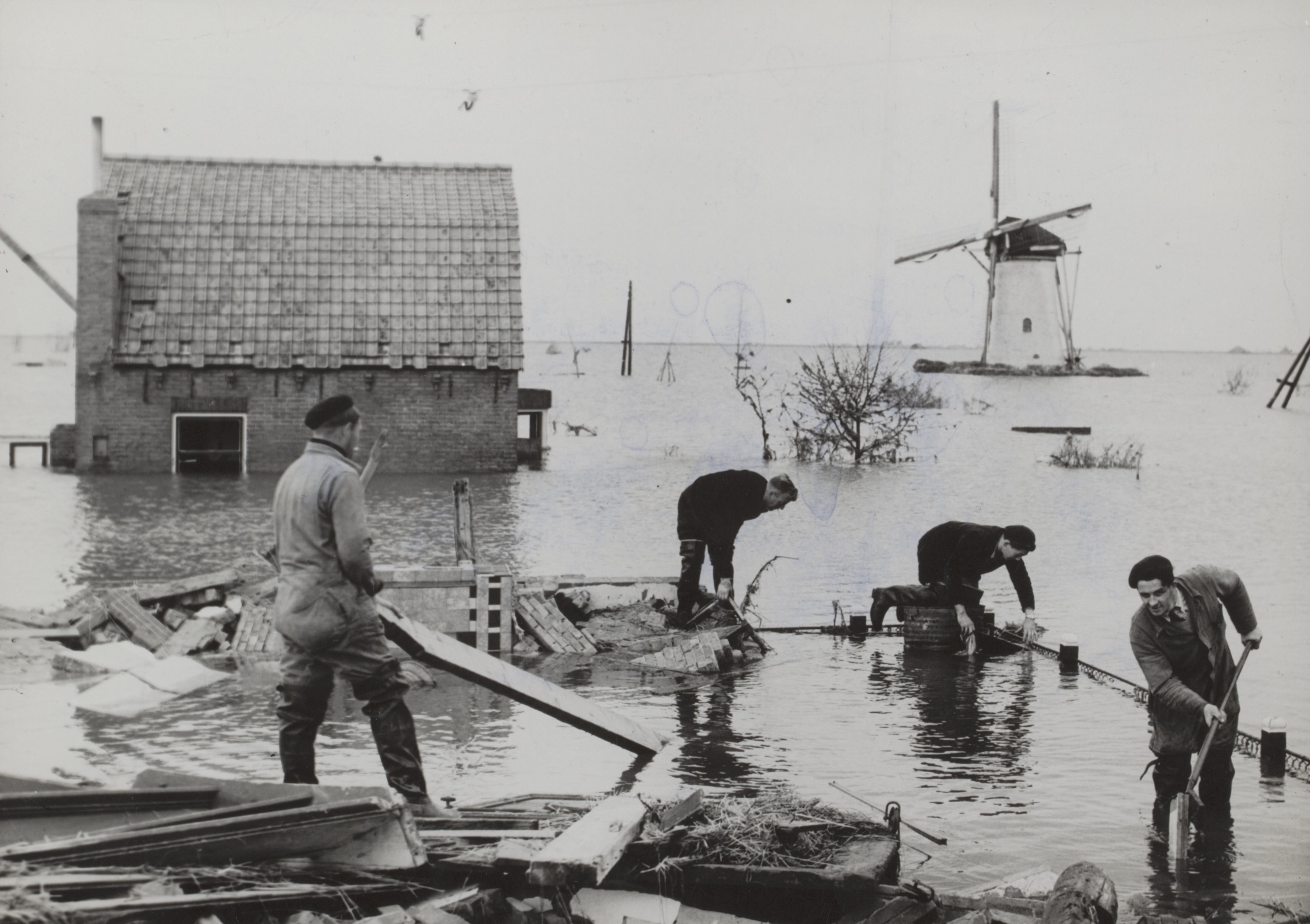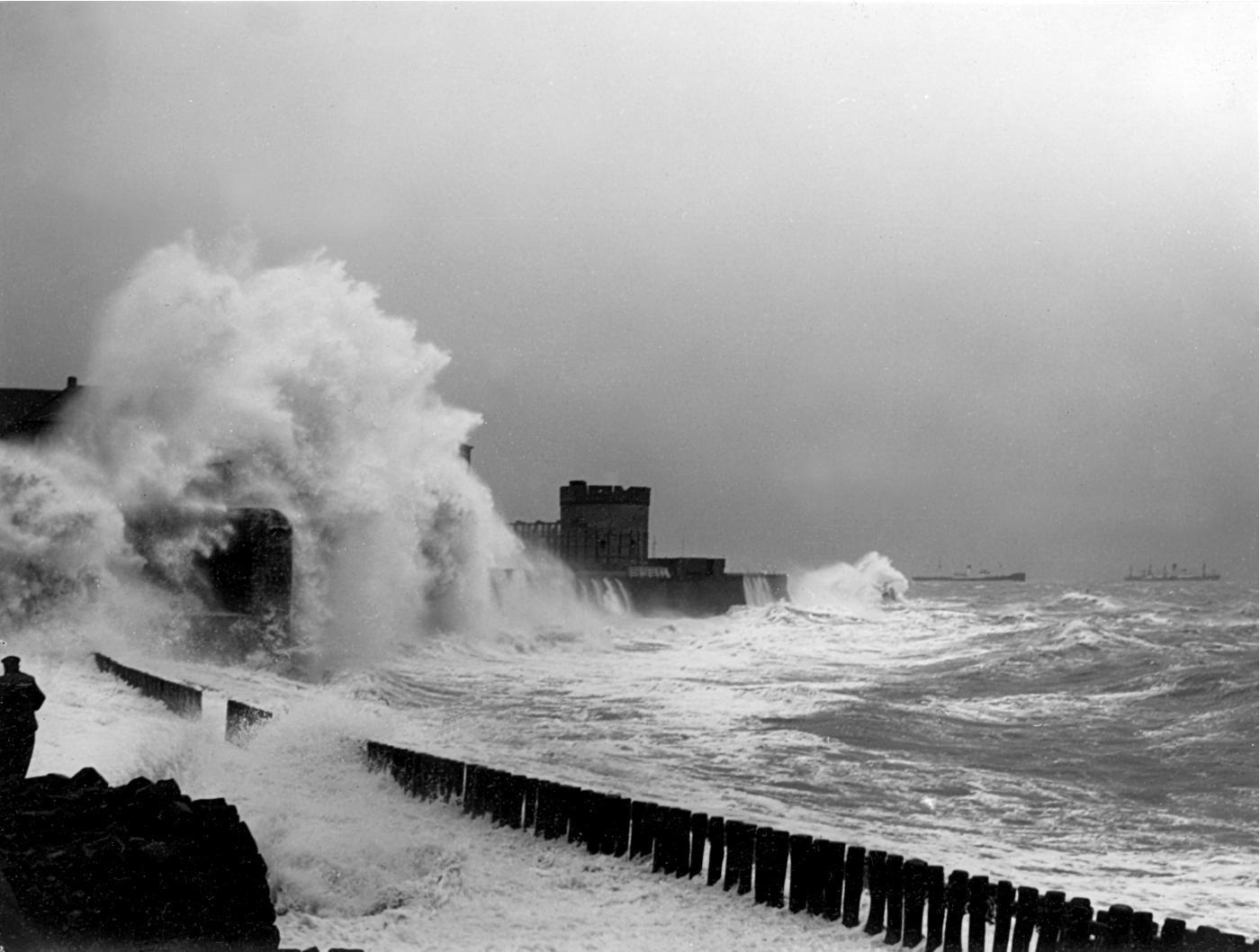Schouwen-Duiveland shortly after the North Sea Flood
Few villages remained safe. The force of the water sometimes swept entire houses away.

The Flood Disaster of 1 February 1953 was a terrible event with huge consequences. 1,836 people and tens of thousands of animals drowned. About 72,000 residents of the disaster area had to leave their homes for a long time. Additionally, the damage to their houses and farmland was enormous. The rebuilding took years. The fear, pain, and sadness still remain.
Few villages remained safe. The force of the water sometimes swept entire houses away.

Immediately after the disaster, people had to leave the affected areas. They often moved to safer locations, such as Rotterdam. Soldiers assisted with the evacuation and played a crucial role in rescuing people from the flooded regions.

After months, the water often remains as high as it was on the night of the disaster. People continue to search for victims and animals. Items that might be useful are retrieved from the water as much as possible.

Eventually, the victims were able to return to the affected areas. They rebuilt their homes and the breached dikes. They also worked to restore the fertility of the farmland.

To prevent another disaster like the North Sea Flood, the Netherlands constructed the Delta Works. But did this solve all the sadness and fear? And does it mean we have now mastered the water?